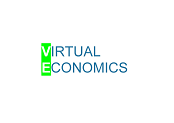The Comparative Analysis of the Industrial Policy Impact on Export Performance in the Military and Democratic Regime of Pakistan
DOI:
https://doi.org/10.34021/ve.2020.03.02(4)Keywords:
industrial policy, export performance, democracy regime, autocracy regimeAbstract
Since independence, the economy has always suffered from the power struggle between democracy and autocracy, which significantly damaged the economy and gave birth to different economic issues, the export sector being one of the top most affected. Once titled among Asian Tigers, the country’s export overseas yields even to Bangladesh. The current study attempts to analyse the impact of industrial policy on export performance under democracy and autocracy. Many authors and past studies have argued that Pakistan lacks the long-term farsighted industrial policy. The paper considers the industrial policy instruments, import tariff, export subsidy, export rebate, R&D expenditures, industrial expenditures and export processing zone, while export sophistication, export diversification and export competitiveness are used as indicators of export performance from 1980 till 2018. The result of the study indicates that the democracy type of a regime promotes industrialization with expanding export base and competitiveness, while the autocratic type of a regime is helpful in producing sophisticated goods. The analysis is focused on the descriptive basis by comparing the changes and growth in democracy and autocracy, while the Error Correction Model has been applied to see the adjustment of shocks and structural changes. Export sophistication and export diversification show a significant convergent effect, while export competitiveness demonstrates a divergent relation with our independent variables. The findings suggest that it is of sheer necessary to have a long-term farsighted industrial policy under conditions of stability to attract more and more investment in the economy to sophisticate, diversify and promote competitiveness.
Downloads
References
Ahmad, H., & Hamid, N. (2014). Patterns of Export Diversification: Evidence from Pakistan. The Lahore Journal of Economics, 19, 307-326.
Anjum, M. I., & Sgro, M. P. (2017). A Brief History of Pakistan's Economic Development. Real-World Economics Review, 80, 171-178.
Arif, B. W., Kayani, F. N., & Kayani, U. N. (2012). The Interrelationship between Democracy and Economic Growth: Theories and Empirics. Pakistan Journal of Social Sciences, 32(1), 199-208.
Arslan, N., & Tatlıdi, H. (2012). Defining and Measuring Competitiveness: A Comparative Analysis of Turkey with 11 Potential Rivals. International Journal of Basic & Applied Sciences (IJBAS-IJENS), 12(02), 31-43.
Asteriou, D., & Hall, S. G. (2007). Applied Econometrics: A Modern Approach. Revised Edition. Hampshire: Palgrave Macmillan, 46(2), 117-155.
Beleska-Spasova, E. (2014). Determinants and Measures of Export Performance - Comprehensive Literature Review. JCEBI, 1(1), 63-74.
Burki, S. J. (2008, September). Industrial Policy: Domestic Challenges, Global Imperatives and Pakistan's Choices. The Lahore Journal of Economics, SI, 23-34.
Drury, C., Krieckhaus, J., & Lusztig, M. (2006). Corruption, Democracy, and Economic Growth. International Political Science Review, 27(2), 121–136.
Edward, S. (1993). Openness, Trade Liberalization and Growth in Developing Countries. Journal of Economic Literature, 31, 1358-1393.
Engle, R., & Granger, C. (1987). Co-Integration and Error Correction: Representation, Estimation, and Testing. Econometrica, 55(2), 251-276. https://doi.org/10.2307/1913236
Fatima, G., & Rehman, W. U. (2012). A Review of Privatisation Policies in Pakistan. Interdisciplinary Journal of Contemporary Research in Business, 3(9), 1017-1032.
Gul, S., & Rehman, S.U. (2014). Determinants of Pakistan's Export Performance. Pakistan Business Review, 15, 544-562.
Haq, N.U., & Kemal, M.A. (2007). The Impact of Export Subsidy on Pakiastan's Export. Pakistan: Pakistan Institute of Development Economics.
Hausmann, R., Hwang, J., & Rodrik, D. (2007). What You Export Matters. Journal of Economic Growth, 12, 1-25.
Hayat, A.M. (1999). Appraisal of Stabilization and Structural Adjustment Program in Pakistan. Journal of Economic Cooperation, 20(3), 67-84. Retrieved from https://www.sesric.org/files/article/173.pdf
Hussain, I. (2009). The role of Politics in Pakistan's Economy. Journal of International Affairs, 63(1), 1-18.
Hussain, S.S., & Ahmed, V. (2012). Experiments with Industrial Policy: The Case of Pakistan. Islamabad, Pakistan: Sustainable Development Policy Institute.
Kanwal, L. (2015). Economic Development in Pakistan: A reflection of Social Division during 1947-1969. Pakistan Journal of Social Sciences (PJSS), 35(1), 497-507.
Khan, A.H., & Saqib, N. (1993). Economic Development and International Trade. International Economic Journal, 7(3), 53-64.
Kharel, K. (2016). Assessing the Impact of Industrial Policies on Economic Development in Nepal. Economic Journal of Development Issues, 17(1-2), 40-75. https://doi.org/10.3126/ejdi.v17i1-2.14521
Knutsen, C.H. (2012). Democracy and Economic Growth: A Survey of Arguments and Results. International Area Studies Review, 15, 393-415.
Mahmood, A., & Ahmed, W. (2017). Export Performance of Pakistan: Role of Structural Factors. Pakistan: State Bank of Pakistan Working Paper.
Masaki, T., & Walle, N. V. (2014). The Impact of Democracy on Economic Growth in Sub-Saharan Africa, 1982-2012. World Institute for Development Economics Research. https://doi.org/10.35188/UNU-WIDER/
Nyambane, E.N. (2013). Determinants of Mackahoo's Country Manufacturing Sector Competitiveness and Applicability of Porter's Diamond Model. Nairobi: School of Business, University of Nairobi.
Robinson, J.A. (2006). Economic Development and Democracy. Annual Review of Political Science, 9, 503-527. https://doi.org/10.1146/annurev.polisci.9.092704.171256
Saleem, A., & Sial, M. H. (2015). Export Growth Nexus in Pakistan: Co-Integration and Casualty Analysis. Pakistan Economic and Social Review, 53(1), 17-46.
Shabbir, G. (2017). Corruption, Democracy and Economic Growth: Does Conditionality Matter? Pakistan Economic and Social Review, 55(1), 99-117.
Sousa, C. M.P., Martínez‐López, F.J., & Coelho, F. (2008). The determinants of export performance: A review of the research in the literature between 1998 and 2005. International Journal of Management Reviews, 10(4), 343-374. https://doi.org/10.1111/j.1468-2370.2008.00232.x
Tavares, J., & Wacziarg, R. (2001). How Democracy Affect Growth? European Economic Review, 45, 1341-1378.
The World Bank. (2017). Pakistan Development Update: Growth: A shared Responsibility. Washington, D.C., United States: The World Bank.
Weldemicael, E.O. (2012). Determinants of Export Sophistication. Retrieved from https://www.business.unsw.edu.au/About-Site/Schools-Site/Economics-Site/Documents/E.Weldemicael%20-%20Determinants%20of%20Export%20Sophistication.pdf
WITS. (2018). Economy of Pakistan. Washington D.C., United States of America: World Bank.
Zaouali, A., & Ouechtati, I. (2013). Economic vulnerability and Economic Growth: What is the Role of Institutions for MENA countries? International Journal of Advanced Research, 1(8), 667-675.
Zouhaier, H., & Kefi, M. K. (2012). Democracy, Investment and Economic Growth. International Journal of Economics and Financial Issues, 2(3), 233-240.





